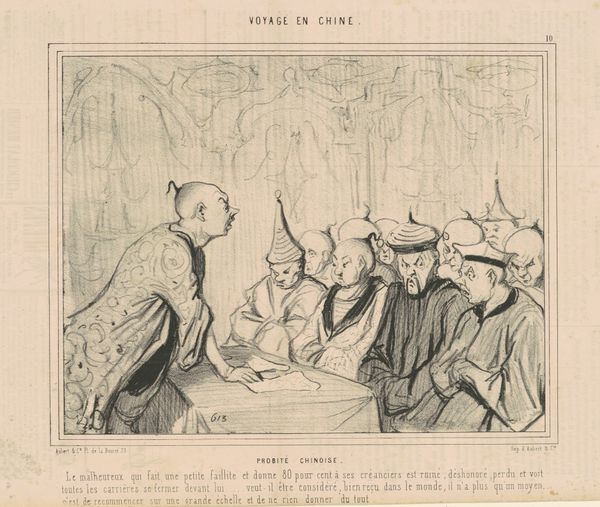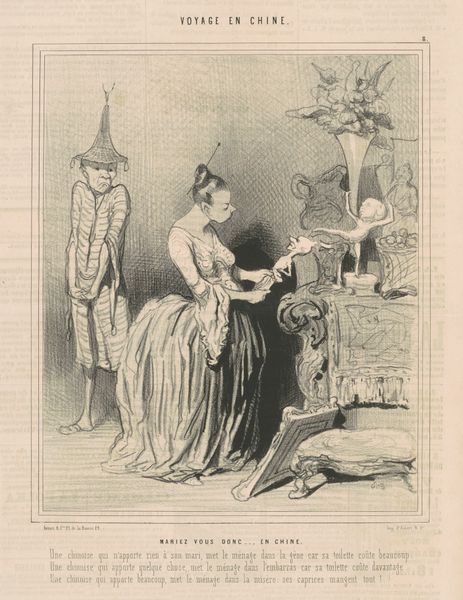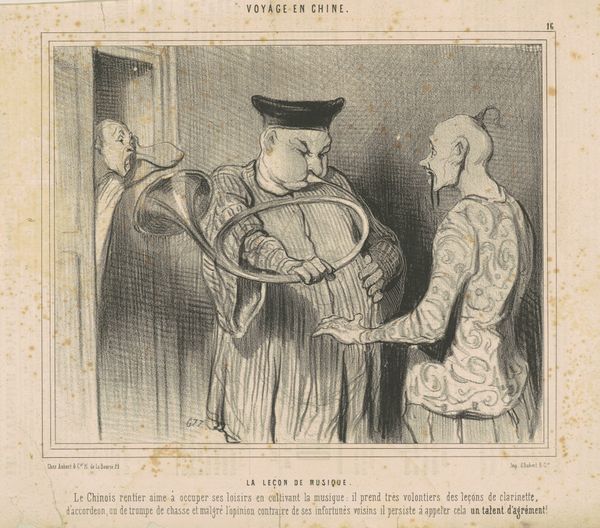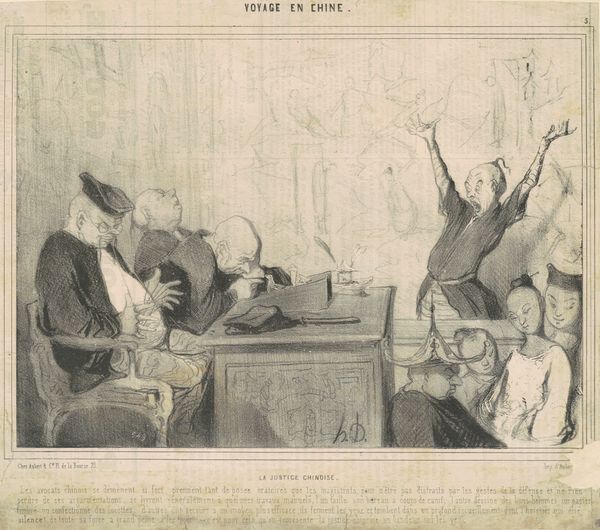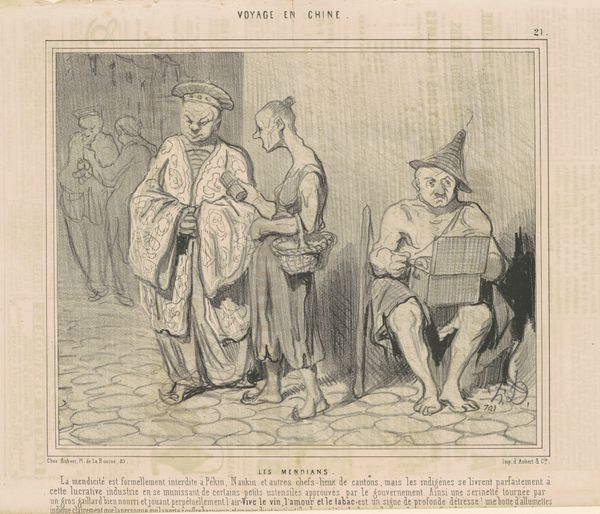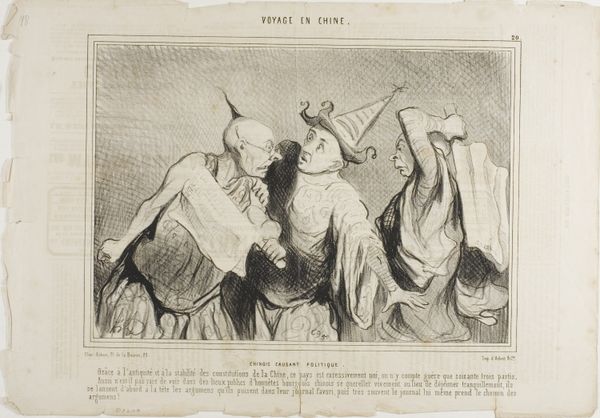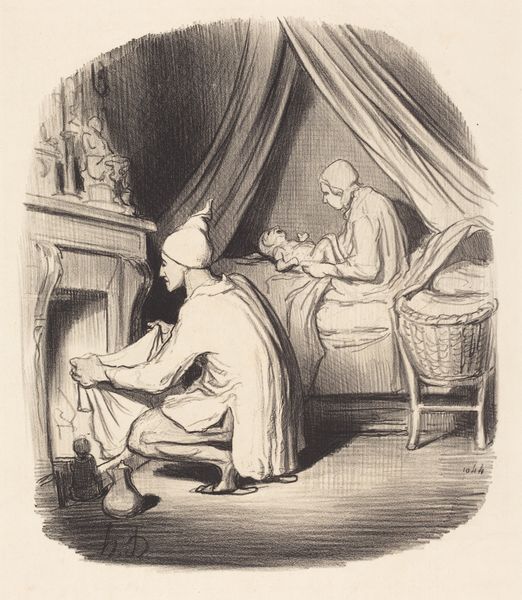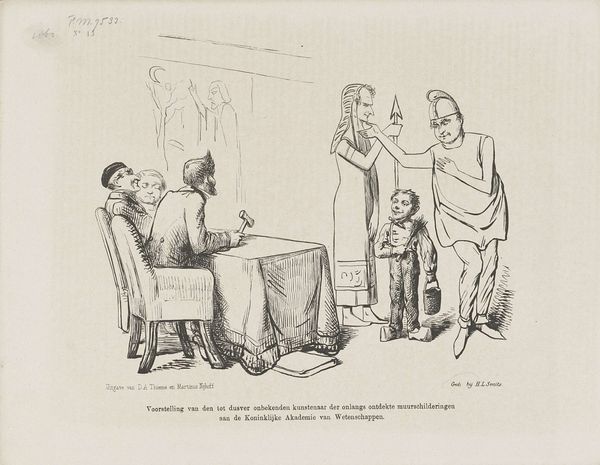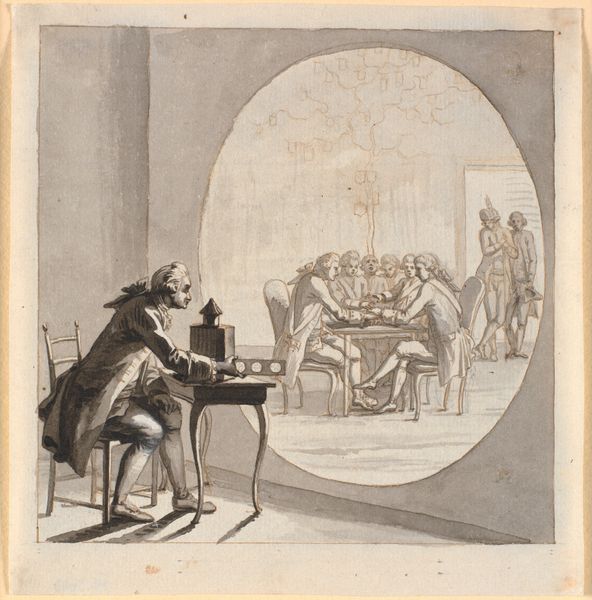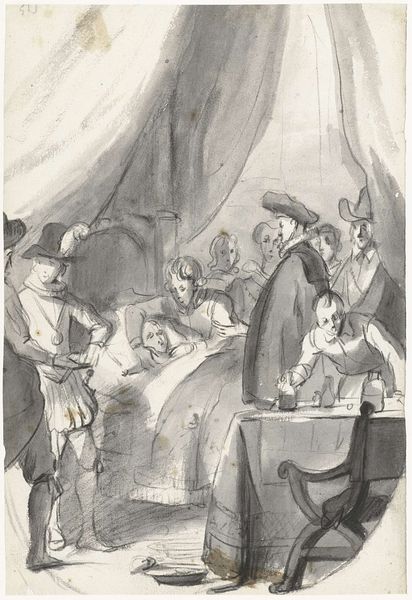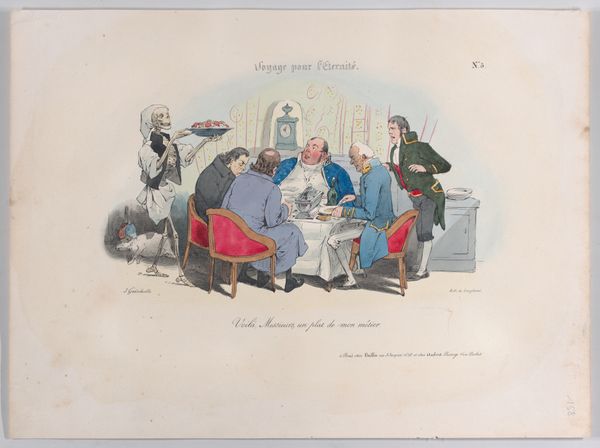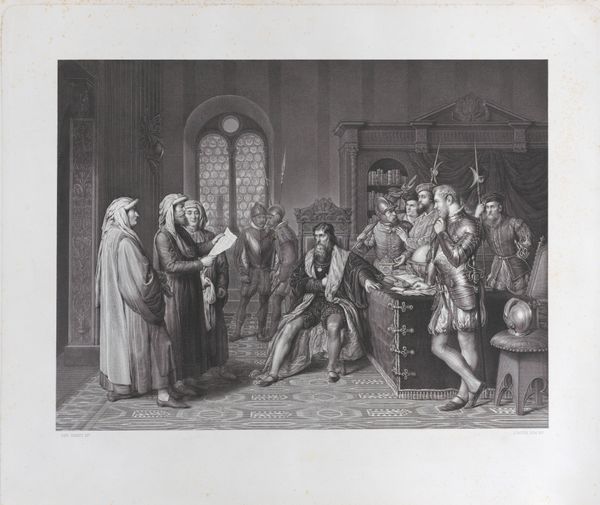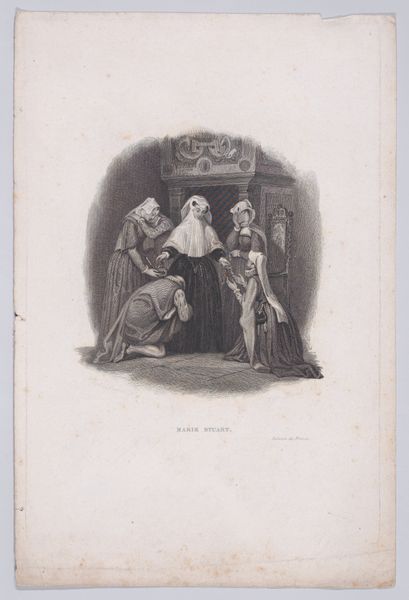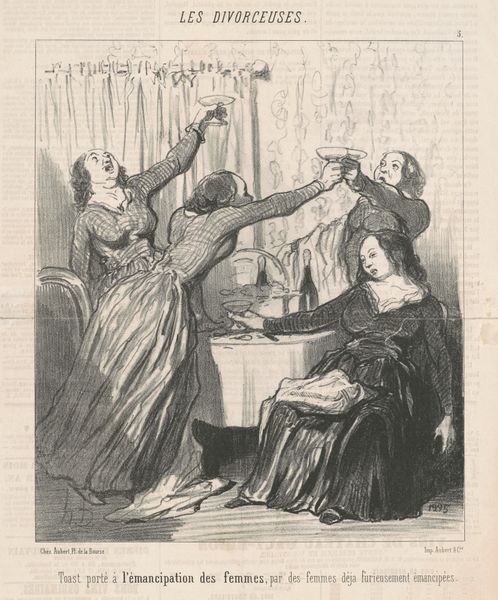
drawing, lithograph, print, ink
#
drawing
#
lithograph
# print
#
french
#
caricature
#
ink
#
orientalism
#
genre-painting
Copyright: National Gallery of Art: CC0 1.0
Editor: This is "Un divertissement de Pékin," a 19th-century lithograph and ink drawing by Honoré Daumier. I’m struck by the artist's sharp, satirical style. It definitely feels like a commentary on something, but I'm unsure of what that could be, other than maybe leisurely amusement. How do you interpret this work? Curator: This piece offers a window into the 19th-century European gaze upon China. It is one that is fraught with power dynamics and, frankly, colonial assumptions. Daumier, a French artist, positions himself as an observer of a foreign culture, showcasing what he perceives as Chinese pastimes. But what are the implications of labeling something as "entertainment" when it involves another culture? How does orientalism play a role here? Editor: So, it's not necessarily an objective representation but more of a reflection of European attitudes toward China at the time? I guess I had hoped it was something that stood the test of time, and offered a broader message on social structures. Curator: Exactly. This print participates in constructing an "us" versus "them" narrative, framing the Chinese as ‘other’. Notice the artistic choices – the exaggerated features and the title “Voyage en Chine” – further exoticizes and flattens a diverse culture into a singular, easily digestible image for a Western audience. What do you notice about how the scene itself is constructed and depicted? Editor: Now that you mention it, there does seem to be something off-putting and strange. Well, I realize I should think about these broader sociopolitical contexts when analyzing art. Curator: Precisely. It encourages us to consider who has the power to represent whom, and to what end. Thank you for exploring that challenging perspective!
Comments
No comments
Be the first to comment and join the conversation on the ultimate creative platform.
